By: E.J. Lawrence
My apologies to the reader for the really bad pun in the title. I just couldn’t resist.
I have a very vivid memory from childhood. I was four or five, and I was sitting in the living room of our apartment watching The Little Mermaid on VHS. My dad was on the couch watching with me. I don’t remember how I felt about the movie up until this point, but I do remember the moment that terrified me.
Bergabunglah segera dan nikmati beragam permainan poker online, permainan kartu yang seru dan tentunya sangat diminati para pemain. Tak hanya permainan yang seru namun juga tersedia Bonus dan promosi yang menunggu, dengan permainan dan bonus yang beragam tentunya akan menambah daya tarik pemain. Yukk Segera bergabung dengan agen idn poker untuk menikmati beragam permainan dan beragam bonus yang menggiurkan.
To add some context, I happened to be a pretty adventurous child who wasn’t afraid of much–no monsters in my closet or under my bed. No night terrors or fear of the dark. But the most scared I ever remember being as a small child happened toward the end of The Little Mermaid. It’s the moment when the sea-witch Ursula’s identity is revealed, and suddenly, she begins to grow…and grow…and grow. I remember screaming, “Daddy, turn it off!” as I covered my eyes with my hands. I didn’t watch The Little Mermaid for probably another ten years.

To date, no mythical or fairy tale creature terrifies me quite like the witch. She can steal your voice; your life; your very soul. The Slavic Baba Yaga is particularly fearsome–her house stands on chicken legs. And, well…there’s just something not quite natural about a house that’s stilted on two chicken legs.
Witches. Are. Terrifying.
And yet, one of the little-known (or little emphasized) points about the fairy tale witch is that she’s as likely to help as harm. In a Russian version of Cinderella–“Vasilisa the Fair”–Baba Yaga threatens to eat Vasilisa if she does not do as she’s told; however, Vasilisa does as the old woman requires, and it is through her patience that Baba Yaga helps her to marry the Tsar in the end.
This doesn’t make Baba Yaga good; but it does show how even the witches in these stories have their own codes of honor and are perhaps more nuanced than we often give them credit for.
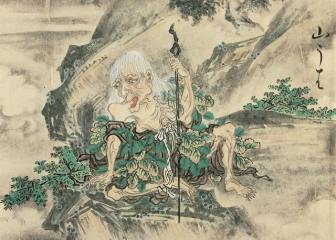
In Japanese folklore, there’s the Yama Uba who, like Baba Yaga, can be harsh, but will also help a lost traveler or bestow wealth on the needy. I have heard the argument that the witch in “Sleeping Beauty” isn’t all bad–she puts the girl to sleep, after all, rather than kill her. Perhaps even she had a modicum of feeling?
Dengan hadirnya bandar togel terpercaya di tengah-tengah masyarakat menjadi sebuah kemudahan bagi para pemain yang ingin bertaruh togel macau. Dengan pilihan pasaran yang beragam seperti singapore pools, cambodia pools serta masih banyak lagi membuat pemain lebih merasa leluasa saat hendak bertaruh. Yukk segera kunjungi platform nya sekarang juga.
Fairy tale witches–like everything else in a fairy tale–serve more as symbols than independent characters. Though, what they’re symbols for has stirred a great deal of debate.
Some argue that witches are women who represent an independence that society fears; that she is the unbridled power of women.1 Some argue that witches represent the fears of the female protagonist–the part of herself that she represses, but a very real, tangible image of what she has the potential to become.2 Still others say that the witch is a symbol of the negative aspects of femininity–rather than nurture children, she eats them; rather than create healing herbs, she dabbles in poisons and harmful potions.3 Perhaps the fairy tale witch is all of these, or at least a mixture of some.
What I think is interesting to point out when trying to determine the role of the fairy tale witch is the etymology of the word itself. For one, the word is so old that determining its exact etymology is difficult. The OED marks it of “indeterminate origin,” but that doesn’t stop there from being theories. On the one hand, it could be cognate with the words “wicked” and “wicce” (meaning “bad”). On the other, it could be kin to the words “wizard” and “wise”–both words with positive connotations.4 In many early English manuscripts, the word was used interchangeably to refer to a woman who dabbled in dark magic or a woman who used healing herbs to save someone’s life. It seems that the English language has long recognized the nuance and the duality of the term, even if they more often associate the word with the former rather than the latter.

And yet, all of that seems to be consistent with what we know of fairy tale witches themselves. They can be malicious and malevolent, seeking to harm two poor children lost in the woods or poisoning their stepdaughter with a shiny red apple. But they can also be good, helping a young maiden escape her evil stepmother and find love or casting charms of protection when it suits her purposes. But perhaps it is her unpredictability or perceived capriciousness that causes the word “witch” to give us such uneasiness. I can’t say for sure.5
Yet, I can think of no other fairy tale character as nuanced or as complicated as the witch. Even within the confines of the fairy tale universe, she stands apart as independent, making decisions as they come; wielding her skills and talents as she pleases. Whether or not this is a “good” thing, I don’t know.
And, in fact, neither does she.
- https://www.theguardian.com/world/2015/feb/24/witch-symbol-feminist-power-azealia-banks
- http://www.anngadd.co.za/2014/12/fairytales-symbols/
- https://www.psychologytoday.com/us/blog/transcending-the-past/201605/mothers-witches-and-the-power-archetypes
- https://www.dictionary.com/browse/witch?s=t
- I can say, however, that it wasn’t Ursula’s capriciousness that frightened me when I was a child. I’m pretty sure it was her stealing Ariel’s voice and then growing into a giant octopus.

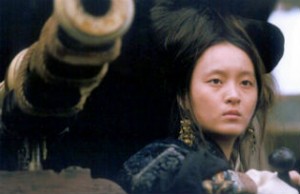

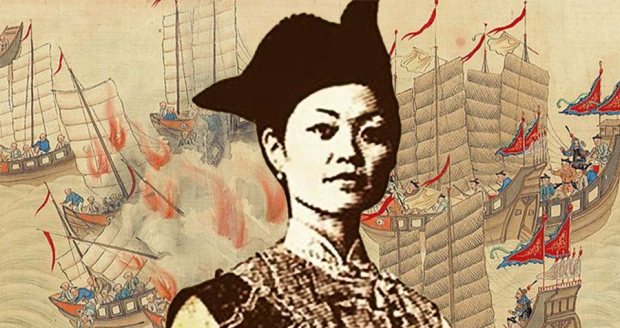
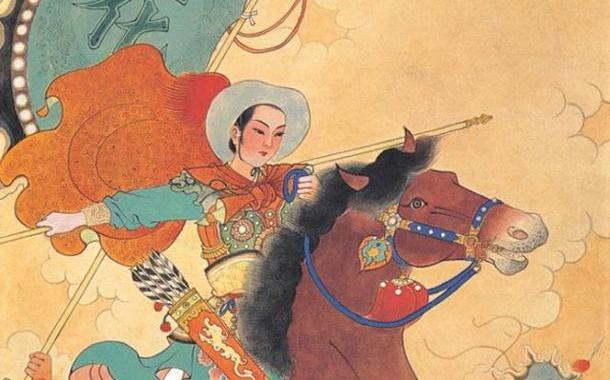
 reader that she is greater than the sum of her private parts, that she’s a whole person, that her actions have been the most important part of her existence. The reaction of her fellow soldiers, is initial surprise, but without change in their demeanor or respect for Mulan.
reader that she is greater than the sum of her private parts, that she’s a whole person, that her actions have been the most important part of her existence. The reaction of her fellow soldiers, is initial surprise, but without change in their demeanor or respect for Mulan. Who is the other prominent figure in the story? Well, oddly enough it is, “the Son of Heaven,” a reference to the Khan. It is him she meets at the end of her service and he asks her what she wants so she can be rewarded for her service and the only thing she asks is for a horse to return home. She does not seek a post as a minister or other high rank. With her lack of desire for power and only desire to return home, reflect on the idea that she never really changed, that she had always been “daughter,” despite leaving home. Along with the simultaneous existence of gender identity, Mulan also embodies opposing ideas: fierce warrior, loyal daughter; male power, rejection of male authority, soft and hard power.
Who is the other prominent figure in the story? Well, oddly enough it is, “the Son of Heaven,” a reference to the Khan. It is him she meets at the end of her service and he asks her what she wants so she can be rewarded for her service and the only thing she asks is for a horse to return home. She does not seek a post as a minister or other high rank. With her lack of desire for power and only desire to return home, reflect on the idea that she never really changed, that she had always been “daughter,” despite leaving home. Along with the simultaneous existence of gender identity, Mulan also embodies opposing ideas: fierce warrior, loyal daughter; male power, rejection of male authority, soft and hard power.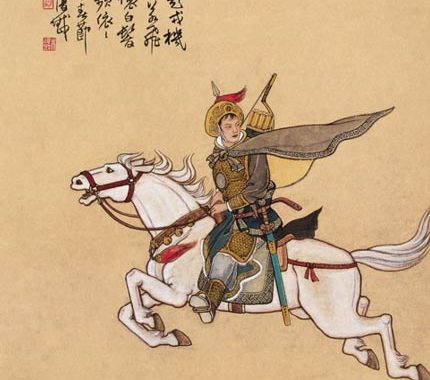
 by
by  Nonetheless, in a time that male physical might and female beauty permeated stories, Mulan’s tale stands out as quite unique. By disguising herself as a man, she takes her aging father’s place in the army. This part is pretty familiar if you’ve watched the Disney movie. However, according to the song, Mulan’s military term is not a short one, in fact, she spends twelve years campaigning in the Khan’s army.
Nonetheless, in a time that male physical might and female beauty permeated stories, Mulan’s tale stands out as quite unique. By disguising herself as a man, she takes her aging father’s place in the army. This part is pretty familiar if you’ve watched the Disney movie. However, according to the song, Mulan’s military term is not a short one, in fact, she spends twelve years campaigning in the Khan’s army.
 The project, Rejected Princesses, present with endearing illustrations the stories of women and girls who have not been featured in the popular awareness. Created for children, the stories are accessible, fun and positive. The interest and introduction to reading and the knowledge, themes and ideas that they convey are vital to the education of children everywhere. Books can change the world.
The project, Rejected Princesses, present with endearing illustrations the stories of women and girls who have not been featured in the popular awareness. Created for children, the stories are accessible, fun and positive. The interest and introduction to reading and the knowledge, themes and ideas that they convey are vital to the education of children everywhere. Books can change the world.
 important than their physical appearance? For those of us who love to read, are enraptured with knowledge and the quest to obtain it, Queen Seondeok and the respect she garners is a rare example of a woman who was most well renown for her substance. It is no surprise that the K-Drama of Queen Seondeok is wildly popular among both Korean and American fans. Further, stories of Seondeok also relay her compassion and concern for those she ruled, all characteristics that are not traditionally celebrated in monarchs who are more often known for their military conquests than civil-mindedness. It was Seondeok’s intelligence, diligence and compassion that cemented the Silla Kingdom but further developed Korean culture. This was a turbulent part of Korean history and the peninsula was split between competing kingdoms, Silla, Goguryeo and Baekche. Diplomacy was valued as well as military strength. Understandably, Seondeok’s abilities greatly contributed to maintaining Silla despite rebellions and upheavals during her fourteen-year reign. In fact, it was through both soft and hard power—an alliance with Tang China, that the Silla dynasty would be able to militarily unify Korea.
important than their physical appearance? For those of us who love to read, are enraptured with knowledge and the quest to obtain it, Queen Seondeok and the respect she garners is a rare example of a woman who was most well renown for her substance. It is no surprise that the K-Drama of Queen Seondeok is wildly popular among both Korean and American fans. Further, stories of Seondeok also relay her compassion and concern for those she ruled, all characteristics that are not traditionally celebrated in monarchs who are more often known for their military conquests than civil-mindedness. It was Seondeok’s intelligence, diligence and compassion that cemented the Silla Kingdom but further developed Korean culture. This was a turbulent part of Korean history and the peninsula was split between competing kingdoms, Silla, Goguryeo and Baekche. Diplomacy was valued as well as military strength. Understandably, Seondeok’s abilities greatly contributed to maintaining Silla despite rebellions and upheavals during her fourteen-year reign. In fact, it was through both soft and hard power—an alliance with Tang China, that the Silla dynasty would be able to militarily unify Korea. of its kind dedicated to the study of astronomy in East Asia. Not only does the study of the heavens indicate a sense possibility and intellectual advancement, but greatly increases the accuracy of agricultural practices for the society who has access to the information.
of its kind dedicated to the study of astronomy in East Asia. Not only does the study of the heavens indicate a sense possibility and intellectual advancement, but greatly increases the accuracy of agricultural practices for the society who has access to the information.